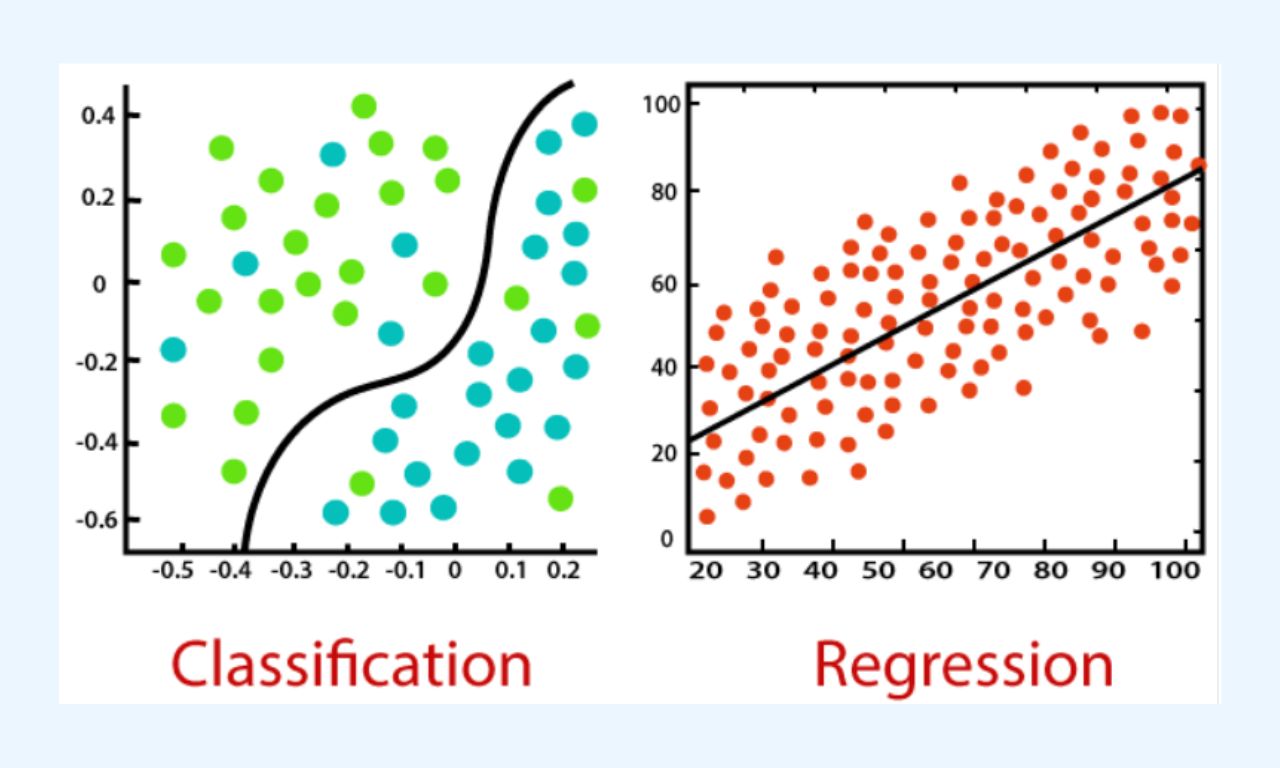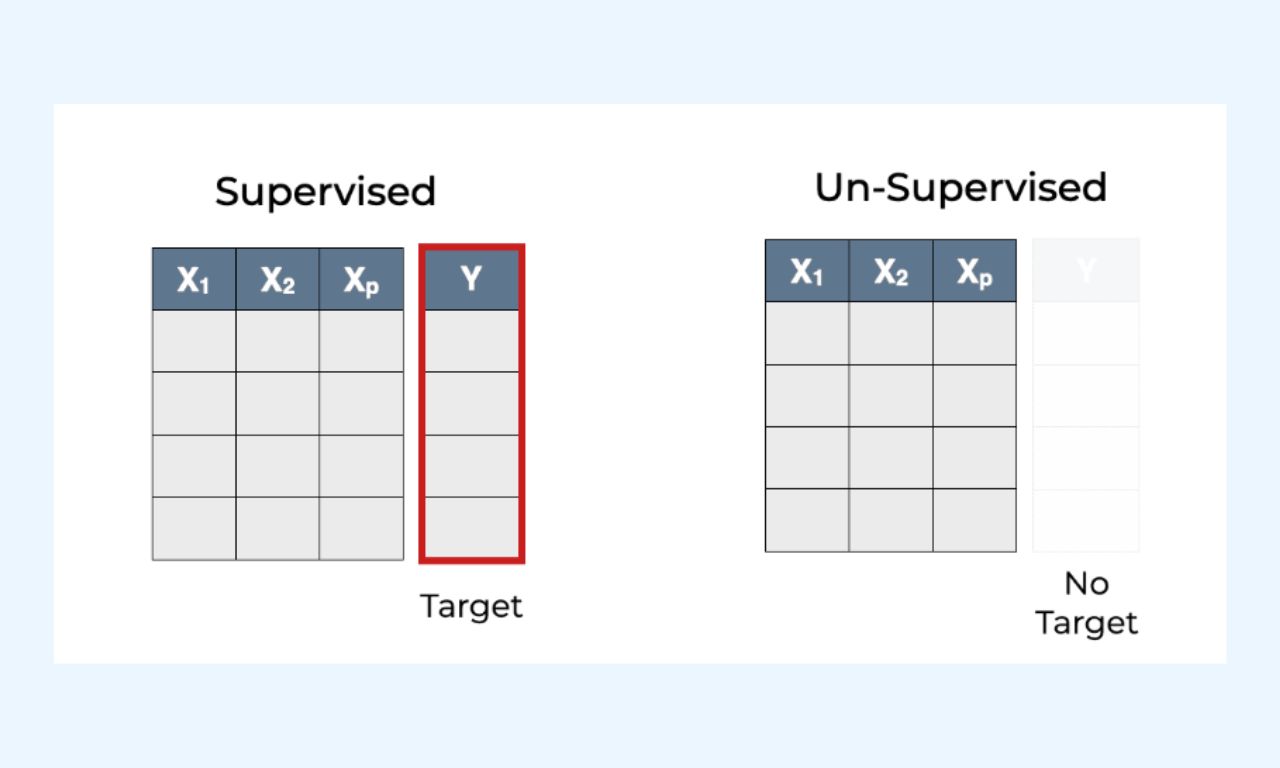Supervised Learning: Definition and Examples (2023)
Machine Learning and Artificial Intelligence make our lives easier every day, offering numerous benefits and fertile ground for innovation and change.
The volume of data, as known, is enormous, resulting in the constant emergence of new methods and techniques for effective machine training on large datasets.
A well-known method and subcategory of machine learning is supervised learning.
In today's article, we will explore:
What is supervised learning and how does it work?
What types of supervised learning algorithms exist?
Differences between supervised and unsupervised learning
Some basic examples of supervised learning
Let's dive into them.
What is Supervised Learning?
Supervised learning is a subset of machine learning, where models are trained on labeled datasets. Labeled datasets are used for training algorithms that classify data or make predictions with high accuracy.
The term "labeled" indicates that some input data already has the correct output. Each data point, therefore, is associated with the corresponding output label.
Supervised learning can be used for various cases, such as risk assessment, fraud detection, spam filtering, and more.
How Supervised Learning Works
Supervised learning uses a large training dataset containing inputs and their corresponding correct outputs, allowing the model to learn over time.
Initially, a collection of a dataset is created, containing examples of input data along with their corresponding correct output labels.
Next, feature extraction is performed.
Each data point in this set is represented by a set of data features that the model will use to make predictions.
Then, after certain parameters are defined, the model is fed with the training data and their respective labels.
The model learns from the data and once properly trained, it is evaluated using a test dataset.
Once the model is trained and evaluated, it can be used to make predictions on new data, providing output labels based on input features.
Continuing, let's explore two primary types of supervised learning algorithms.
Supervised Learning Algorithms
There are two types of supervised learning algorithms: classification and regression.

Classification involves algorithms learning from data to predict outcomes or future events.
For instance, a bank, based on a dataset of customer credit histories, can predict if a customer will default based on their past activity and loans taken.
Machine learning algorithms suitable for classification tasks include:
Decision tree classifiers
Random forest classifiers
Neural networks
Regression, on the other hand, is when algorithms learn from data to predict continuous values, such as sales forecasts for a specific business.
Some examples of algorithms used for regression tasks include:
Linear regression
Decision tree regression
Neural networks
Now that we've delved into supervised learning, let's explore how it differs from unsupervised learning.
Differences Between Supervised and Unsupervised Learning
In supervised learning, labeled data contains both input features (variables X) and target values (variable Y).

In contrast, unsupervised learning involves using unlabeled data, aiming to discover patterns for clustering and association.
This is particularly useful when data scientists are unsure about common properties within a dataset.
Some fundamental clustering algorithms include Hierarchical and K-Means.
As expected, supervised learning models generally produce more accurate results than unsupervised learning.
However, they require human involvement initially to correctly label the data.
On the other hand, unsupervised learning models operate autonomously, with the main goal of extracting information from vast amounts of unlabeled data.

Now, let's look at some basic examples of supervised learning.
3 Examples of Supervised Learning
Here are a few fundamental examples of supervised learning:
Example #1: Image Recognition
Supervised learning algorithms can be used to detect, isolate, and categorize elements from images and videos.
They are particularly useful in computer vision and image analysis.
Example #2: Sentiment Analysis
Another example of supervised learning is sentiment analysis of customer feedback.
Organizations and businesses can use supervised learning algorithms to extract valuable information from large datasets.
This is particularly beneficial for marketing and commerce companies to understand customer sentiment, intention, and overall interaction, enhancing customer loyalty and the company's reputation.
Example #3: Spam Detection
Another significant example of supervised machine learning is email spam detection.
By utilizing supervised classification algorithms, businesses can train databases to recognize patterns in new data, effectively determining whether incoming emails are spam or not.
In Conclusion
So, we've seen what supervised learning is, how it works, how it differs from unsupervised learning, and explored some examples.
The field of data science offers many opportunities for professional growth and well-paying job positions. If you are intrigued and want to learn more about the exciting field of data science, follow us for more educational articles!


.jpg)